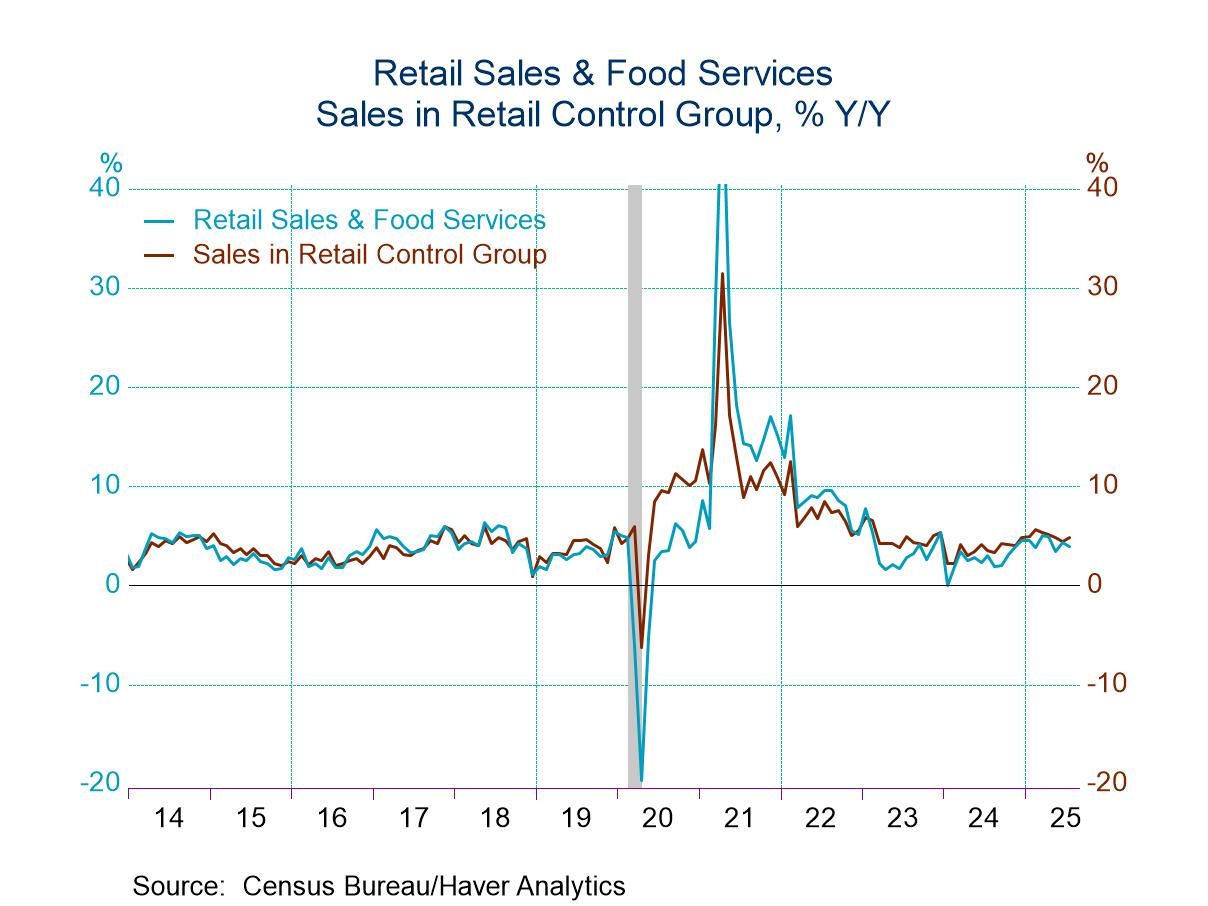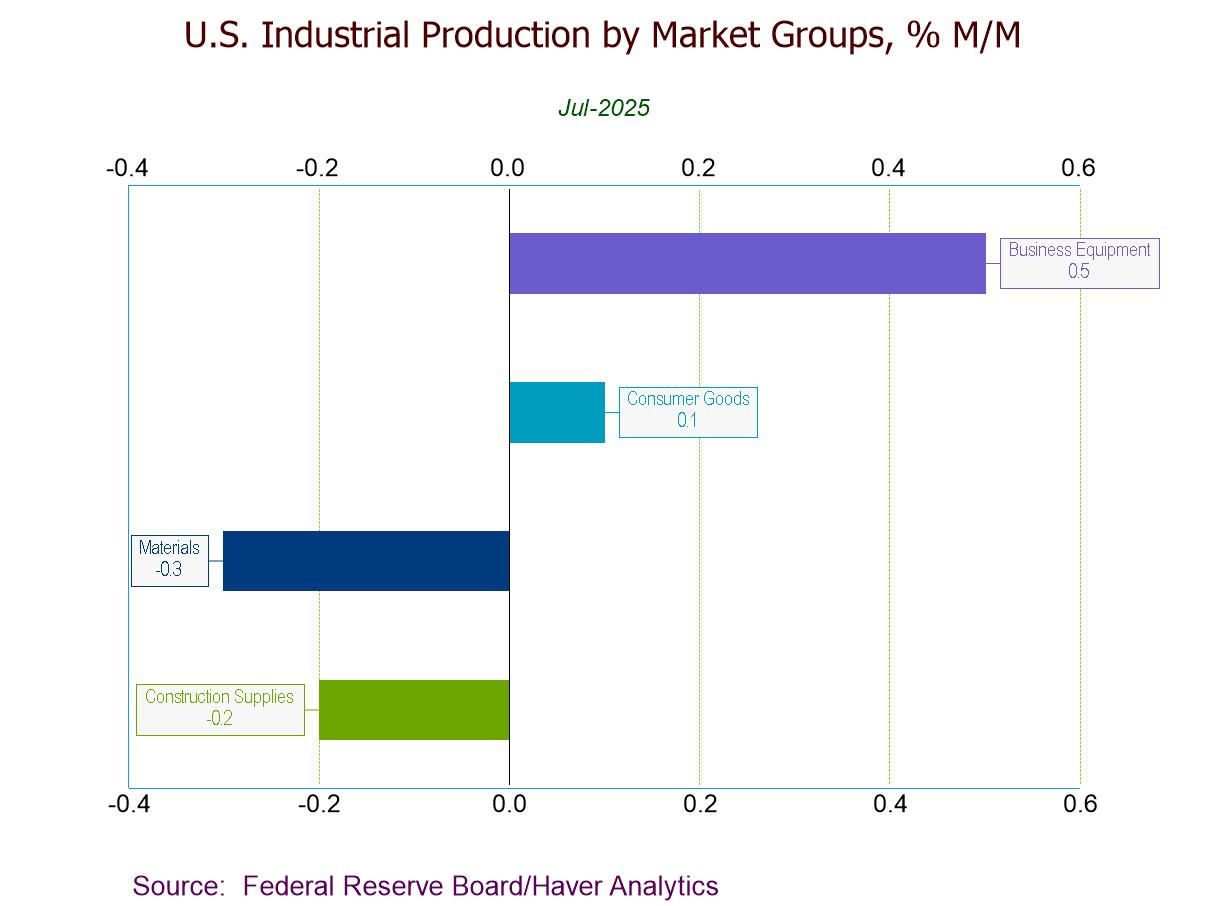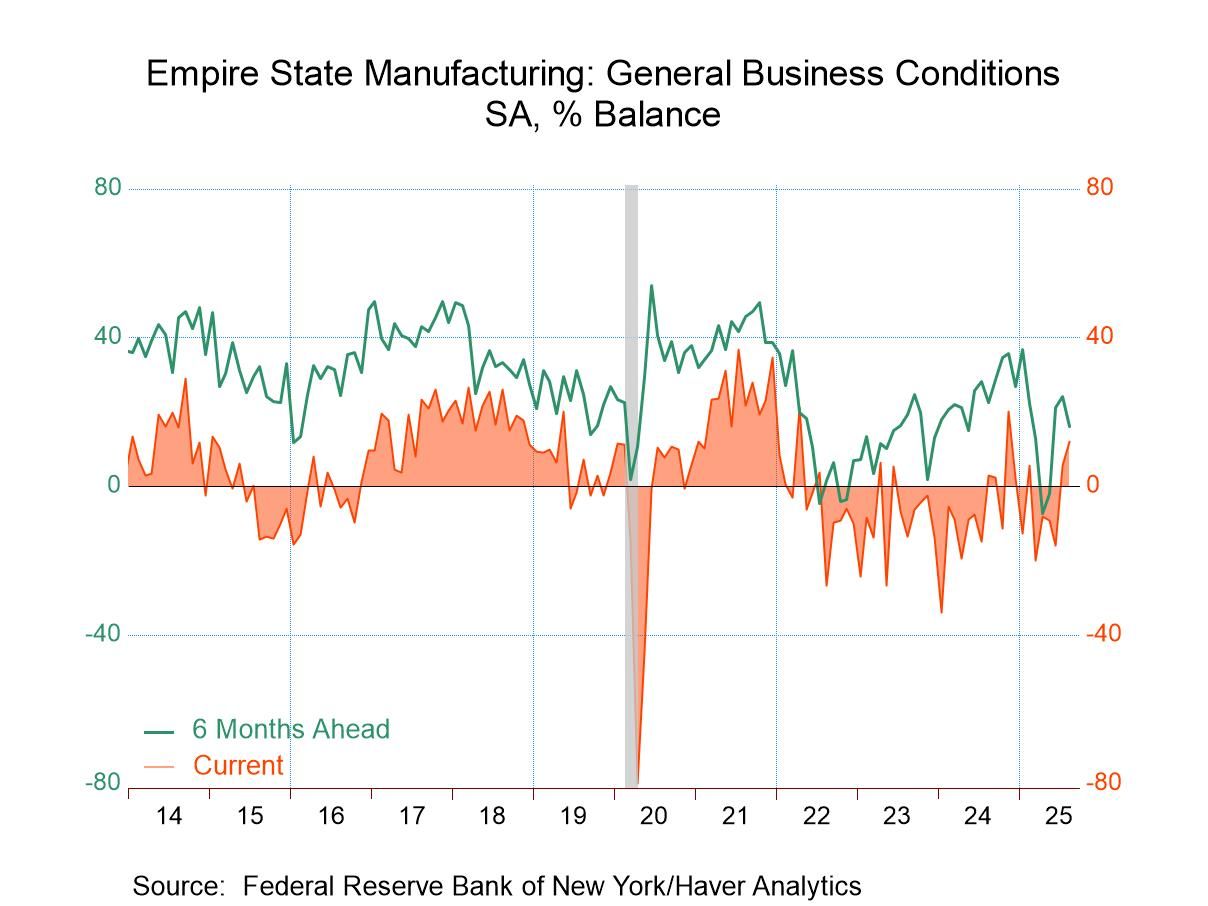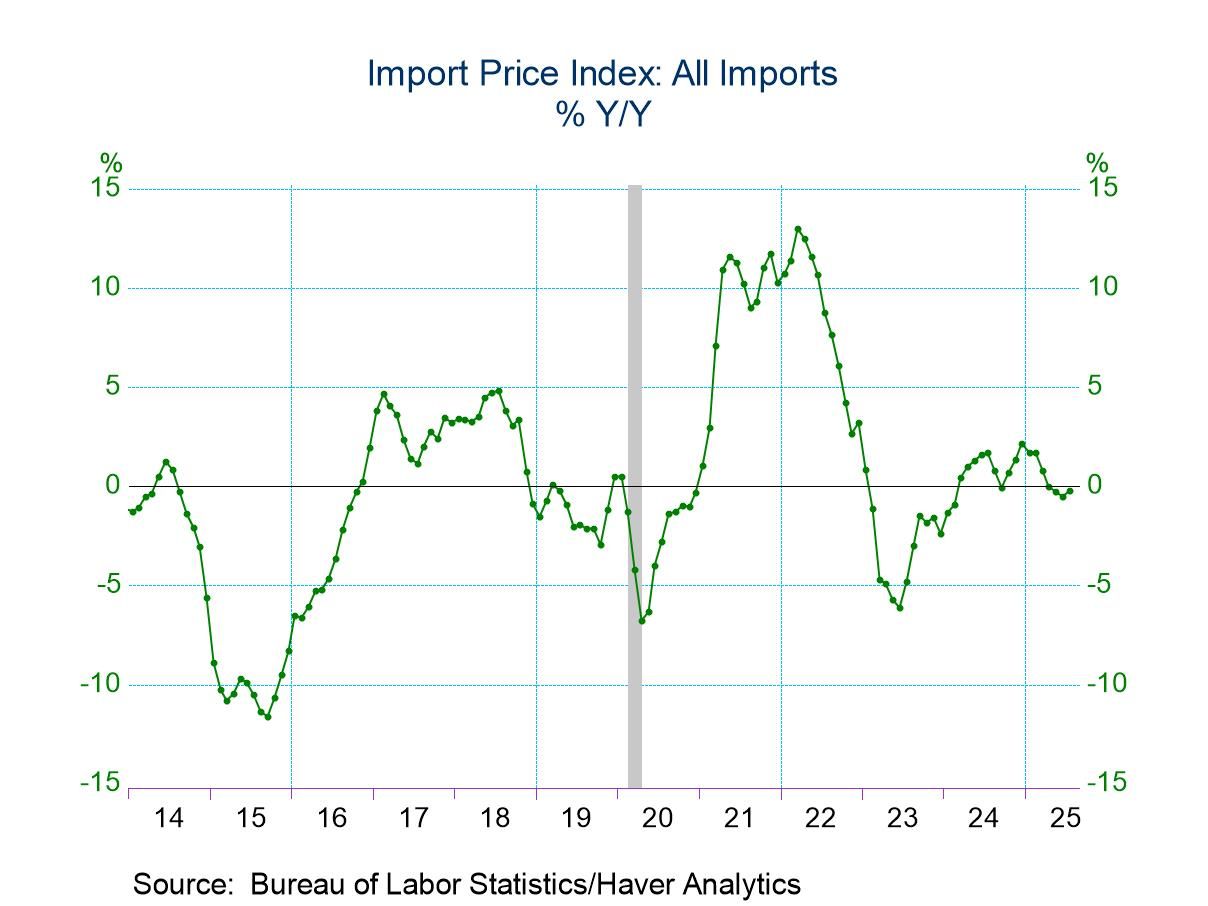 Global| Aug 10 2009
Global| Aug 10 2009Consumer Debt Deleveraging Continues At A Record Pace
by:Tom Moeller
|in:Economy in Brief
Summary
Consumers' near-term worry is about the poor shape of the U.S. economy and what, for many, are balance sheets loaded with too much debt. The longer-term situation is that the consumer spending cycle has passed its peak and is now [...]
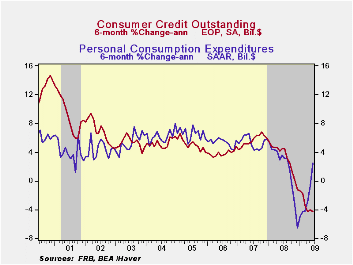
Consumers' near-term worry is about the poor shape of the U.S. economy and what, for many, are balance sheets loaded with too much debt. The longer-term situation is that the consumer spending cycle has passed its peak and is now being damped by an aging population. Together, these forces are causing individuals to shed debt at a record rate. The Federal Reserve reported late Friday that consumer credit outstanding during June fell for the fifth straight month and for the ninth month since last summer. The $10.3B decline followed a slightly-revised $5.4B May drop and it reduced consumer debt by a record 2.8% year-to-year. Since December that rate has accelerated to 4.3%.
Usage of revolving credit again fell sharply. The 5.3B m/m decline followed a $4.8B drop during May. The latest was the ninth decline in as many months. It lowered usage by 5.1% versus one year ago and at an 8.3% rate so far this year. 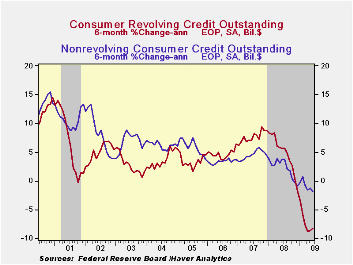
Separately, the Fed reported that non-revolving credit (autos & other consumer durables), which accounts for nearly two-thirds of the total, fell a similarly hard $5.1B in June. Compared to the decline in revolving credit usage, the drop here has been less dramatic, but still substantial. The 1.4% y/y shortfall compares to a 6.8% drop after the 1990-91 recession. It is similar to the pullbacks during 1975 and even the "credit crunch" recession of 1980. During the last six months non-revolving consumer credit has fallen at a 1.9% annual rate.
These figures are the major input to the Fed's quarterly Flow of Funds accounts for the household sector.
Credit data are available in Haver's USECON database. The Flow of Funds data are in Haver's FFUNDS database.
5 Tips for Dealing with a Home Equity Line Freeze or Reduction from the Federal Reserve Board can be found here.
| Consumer Credit (m/m Chg, SAAR) | June | May | Y/Y | 2008 | 2007 | 2006 |
|---|---|---|---|---|---|---|
| Total | $-10.3B | $-5.4B | -2.8% | 1.6% | 5.6% | 4.1% |
| Revolving | $-5.3B | $-4.8B | -5.1% | 1.9% | 7.8% | 5.0% |
| Non-revolving | $-5.1B | $-0.5B | -1.4% | 1.4% | 4.4% | 3.6% |
Tom Moeller
AuthorMore in Author Profile »Prior to joining Haver Analytics in 2000, Mr. Moeller worked as the Economist at Chancellor Capital Management from 1985 to 1999. There, he developed comprehensive economic forecasts and interpreted economic data for equity and fixed income portfolio managers. Also at Chancellor, Mr. Moeller worked as an equity analyst and was responsible for researching and rating companies in the economically sensitive automobile and housing industries for investment in Chancellor’s equity portfolio. Prior to joining Chancellor, Mr. Moeller was an Economist at Citibank from 1979 to 1984. He also analyzed pricing behavior in the metals industry for the Council on Wage and Price Stability in Washington, D.C. In 1999, Mr. Moeller received the award for most accurate forecast from the Forecasters' Club of New York. From 1990 to 1992 he was President of the New York Association for Business Economists. Mr. Moeller earned an M.B.A. in Finance from Fordham University, where he graduated in 1987. He holds a Bachelor of Arts in Economics from George Washington University.



